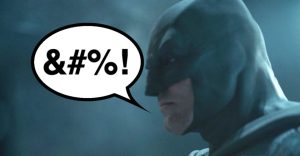Fantasy Hero Archetypes Who Don’t Fit Into D&D’s Class System

Over many decades and different editions, the roleplaying game Dungeons & Dragons has acquired a selection of evocative characters classes to represent certain archetypes of heroes seen in classic fantasy fiction. Whether wielders of blades or slingers of spells, most of the character classes of 5th Edition D&D contain abilities front-loaded towards combat, making it hard for a D&D player to create a character based around a non-combative fantasy archetype – the wise old mentor, physician, or cunning general, for instance.
Fighter, Wizard, Cleric, Rogue, Druid, Monk, Bard, Paladin, Barbarian, Ranger, Sorcerer, Warlock, Artificer, Blood Hunter. These are the current classes of Dungeons & Dragons 5th Edition, each possessing multiple sub-classes with unique abilities catering to heroic archetypes and preferred play-styles. Through multi-classing, selecting feats, and starting with certain backgrounds, a creative D&D player can bring nearly any character to life within the rules of 5th edition… as long as that character is some flavor of weapon-wielder or spell-caster. If a D&D player wants their character to engage in activities outside the domains of violence, subterfuge, and exploration, they generally have to pursue those activities through the game’s narrative, with little mechanical support.
In Chainmail, the prototype fantasy wargaming rules around which original Dungeons & Dragons grew, there were only “Magic-Users” and “Fighting-Men” – that is to say, people who fought with spells and people who fought with magic. During early playtesting, the D&D Cleric Class came about when the need arose for a spell-caster capable of fighting competently in melee and keeping their fellow adventurers afloat; not long after, the “Thief” or Rogue became a fixture of Dungeon & Dragons parties when player expressed a desire to play melee combatants talented at stealth, lockpicking, ambushes, trap-jamming, and other high-utility skills. In future editions of D&D, classes like the archetypes below may arise once enough players clamor for mechanical abilities to complement and validate the heroic narrative they have in mind.
D&D 5e Doesn’t Quite Have A Class For Merchants & Traders

In many a fantasy book or movie, a trustworthy trader, tinker, or traveling merchant sets the plot in motion, moving from town-to-town with a horse and carriage or giant backpack, trading their desirable goods for money, favors, or secrets. It’s more than possible for players in D&D 5e to role-play as traveling merchants by giving their characters (Wizards, Rogues, or Bards, for instance) the Guild Artisan background and putting points into Charisma. There is, however, a decided dearth in classes with (non-magical) abilities designed to help players buy their products cheap, sell high to their customers, and sniff out new opportunities for profit.
D&D 5e Doesn’t Quite Have A Class For Wise Old Mentors

In stories that align with the plot structure of the “Hero’s Journey,” there’s always a wise old mentor – a Gandalf, Dumbledore, or Obi-Wan Kenobi who introduces heroes to their destiny and, assuming they don’t die tragically, takes on the responsibility of teaching their proteges and granting them new skills. Plenty of D&D players in the past have created wise old PCs who try to coach young proteges in their discipline of choice, but currently, the only training rules in D&D 5th edition revolve around granting players new Tool Proficiencies or teaching them new languages. A hypothetical Mentor class or sub-class might let a player bend the rules when it comes to class-based character abilities in D&D, letting the mentor PC grant another PC complementary Feats or other extra abilities.
D&D 5e Doesn’t Quite Have A Class For Tacticians or Strategists

One of the most beloved character classes from Dungeons & Dragons 4th Edition is the Warlord, a “Martial Leader” warrior who coordinated their party in battle through tactical abilities that augmented ally attacks, moved them around the battlefield, and even let them take extra actions outside of their initiative order.
Elements of the Warlord‘s abilities can be found in the Battle Master Fighter subclass of D&D 5e and its tactical Maneuvers, but many D&D fans are hoping for a Warlord-style character class themed more heavily towards tactical support and coordination. There’s also untapped potential for a D&D “commander class” in the vein of classic, intelligent generals such as Sun Tzu, Hannibal, Zhuge Liang, or Napoleon, capable of directing armies in battle, moving them across terrain swiftly, and keeping them well-supplied.
D&D 5e Doesn’t Quite Have A Class For Diplomats

Any D&D character build with sufficiently charisma will be silver-tongued, charming, and able to talk the devil into setting themselves on fire, particularly if they’re a charismatic spell-caster like a Bard, Sorcerer, or Warlock with access to mind-affecting magic. There is, however, a dearth of 5th edition character classes with access to non-magical diplomatic abilities – not just for improving their Persuasion rolls, but for gathering information about the backgrounds, motivations, and desires of the characters they’re negotiating with.
A diplomacy-themed Dungeons & Dragons sub-class with a name like “Envoy” or “Ambassador” could be a great boon in D&D games where players want to talk instead of fight their way past problems; brokering a peace treaty between two warring kingdoms, for instance, or asking a dragon for permission to borrow a single item from their hoard.
D&D 5e Doesn’t Quite Have A Class For Doctors

In Dungeons & Dragons 5th Edition, the Cleric, Bard, Paladin, Druid, Ranger, Divine Soul Sorcerer, Artificer, and Way Of Mercy Monk classes all have access to healing magic of some kind. Of these classes, only the Artificer and Way Of Mercy Monk (and perhaps the Bard) have healing abilities completely detached from Divine Magic. The Artificer Alchemist sub-class brews healing elixirs from herbal ingredients, while the Way Of Mercy Monk is portrayed as a blend of the late medieval plague doctor and the martial arts physician from Wuxia literature (healing wounds and ailments with acupuncture, pressure point strikes, and infusions of Qi).
Any non-magical D&D character with proficiencies in Medicine or Herbalism Kits can be flavored as a doctor of some kind regardless of their class. A proper D&D “Doctor” or “Surgeon” class with non-magical talents designed to complement the Medicine skill would be a great alternative for players who want to heal their comrades, but don’t want their characters to be beholden to gods.
D&D 5e Doesn’t Quite Have A Class For Wrestlers

Traditional tabletop rules for grappling and wrestling were notoriously convoluted, particularly in earlier editions of Dungeons & Dragons. In the much simpler rules for 5th Edition D&D, successfully grappling an opponent reduces their speed to zero, and the grappler can pull their target around at half-speed until the grapple breaks.
By combining grappling with the “Knock Prone” action and feats like “Tavern Brawler,” savvy players with strong characters can strategically grapple opponents, throwing them to the ground and pinning them in place with the skill of a Judo black belt or wrestler. Despite being the go-to class for unarmed combat, the Monk class is rather inefficient as a grappler due to prioritizing Dexterity over Strength as a primary attack attribute. As such, a “Wrestler” sub-class for a Monk, Fighter, or Barbarian, focused on enhancing and adding utility to the Grappling action, would catch the interest of many Dungeons & Dragons players, particularly those who want to role-play a performative pro-wrestler or masked Luchador.
About The Author

















